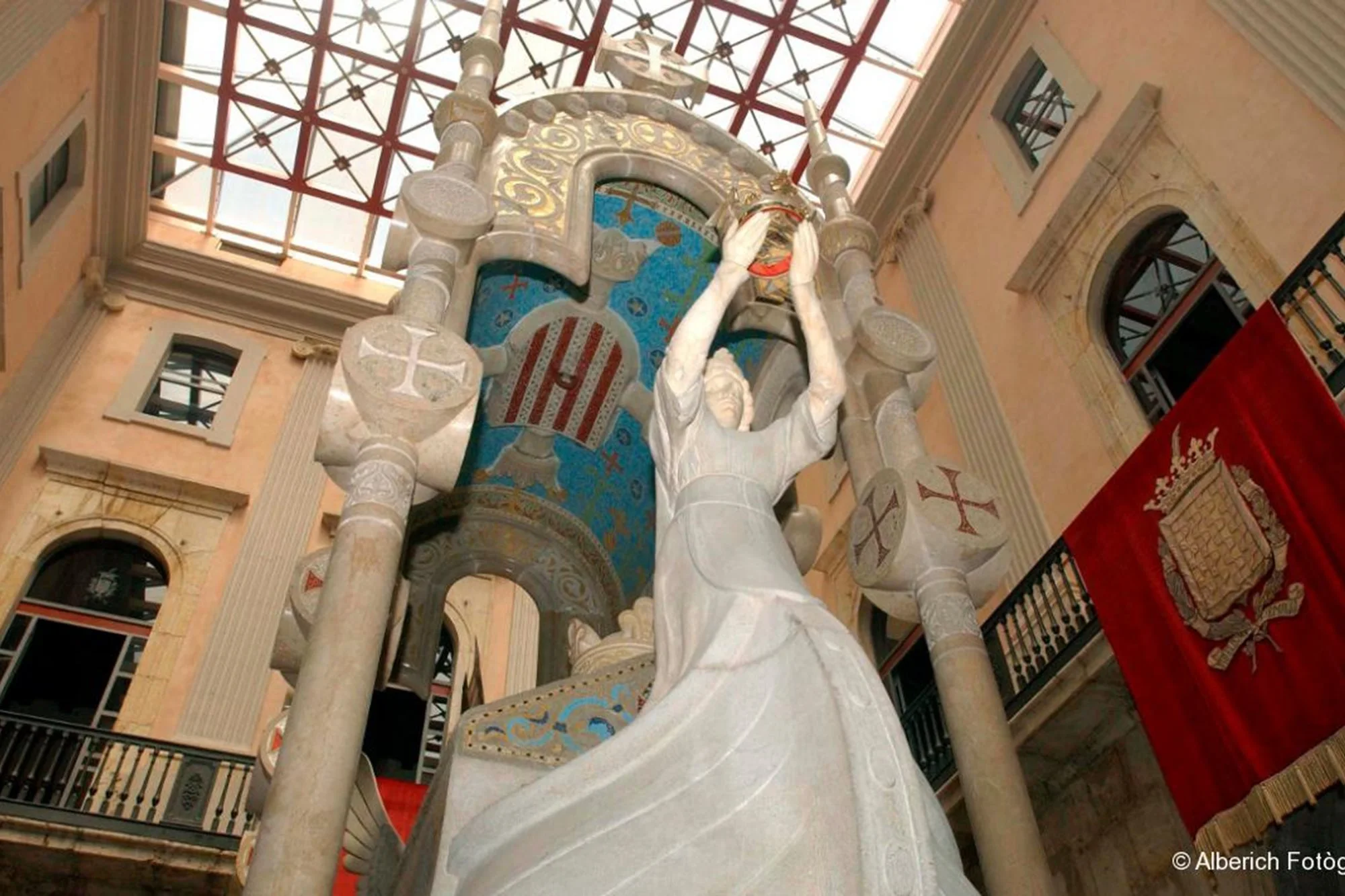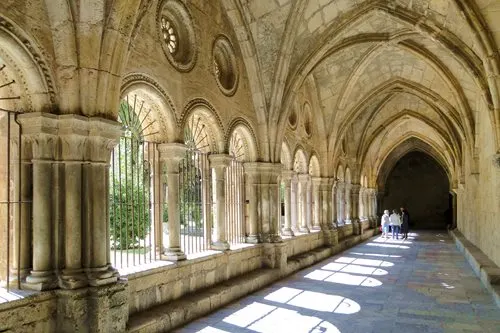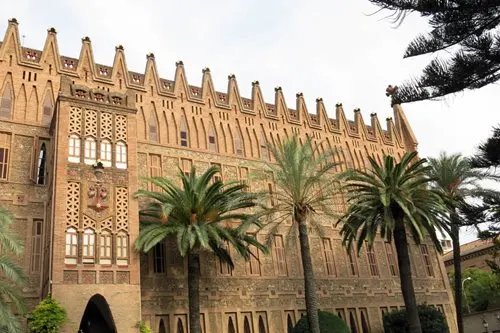
Cookie settings
We use our own and third-party cookies in order to offer our services, display videos, obtain statistics and offer personalized advertising.
For more information, please read our cookies policy.

Lluís Domènech i Montaner used the symbolism of a single Wessel to house remains of King Jaume I. This is not just any vessel; it is a eminently beautiful an luxurious on of porphyry aorned with mosaic.
The tomb is escorted by two sculptures, an angel at the stern an a female at the prow, carrying the King from earthbound to spiritual life. In front the tomb is a canopy supported by four cylindrical columns on each side topped off with pinnacles; their base is fragile and rests on the waves the royal vessel advances.
Through the sculptural and mosaic work from the base on which the tom rests to the interior of the canopy, Domenech i Montaner made the symbols that characterized King Jaume I very clear: his crown and his coats of arms that spoke of his conquest and his realms.
Although the Monuments Commission of Tarragona commissioned the tomb in 1906, the work was not actually installed in its final resting place until 1992 after the best placement had been identified.
Built: XX Century
Author: Lluis Domenech i Montaner
Style: Modernist
Category: Civil
Type: Tomb
Address and telephone
If you see any mistakes or want to add anything to this information, please contact us.



Book your hotel